Lowell, MA Pollen and Allergy Report for Summer 2023
Pollen Allergy Trends in Lowell, MA
When is pollen lowest in Lowell, MA?

February
Lowest month total PPM
Avg. PPM
When is pollen highest in Lowell, MA?

April
Highest month total PPM
Avg. PPM
How does pollen in Lowell, MA compare to Massachusetts?
Lowell has a lower average PPM than the state of Massachusetts.
Lowell yearly avg PPM:
Massachusetts yearly avg PPM:
How does pollen in Lowell, MA compare to the USA?
Lowell has a higher average PPM than the USA.
Lowell yearly avg PPM:
USA yearly avg PPM:
Is pollen worse this year in Lowell, MA?
Spring 2023 was worse than spring 2022.
Spring 2023 PPM:
Spring 2022 PPM:
Average PPM in Lowell, MA
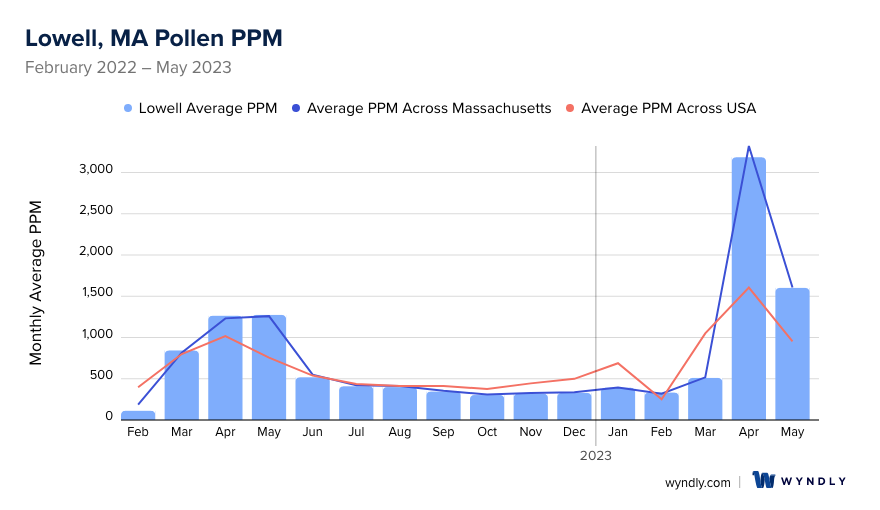
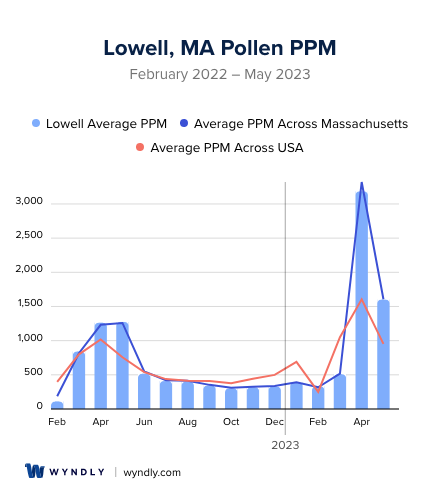
Lowell, MA Pollen and Allergy Breakdown by Month
Grass
When is grass pollen highest in Lowell, MA?
April has the highest grass pollen in Lowell, MA with an average PPM of
When is grass pollen lowest in Lowell, MA?
December has the lowest grass pollen in Lowell, MA with an average PPM of
Tree
When is tree pollen highest in Lowell, MA?
April has the highest tree pollen in Lowell, MA with an average PPM of
When is tree pollen lowest in Lowell, MA?
October has the lowest tree pollen in Lowell, MA with an average PPM of
Weed
When is weed pollen highest in Lowell, MA?
April has the highest weed pollen in Lowell, MA with an average PPM of
When is weed pollen lowest in Lowell, MA?
February has the lowest weed pollen in Lowell, MA with an average PPM of
Lowell, MA Pollen Monthly Breakdown by Pollen Type
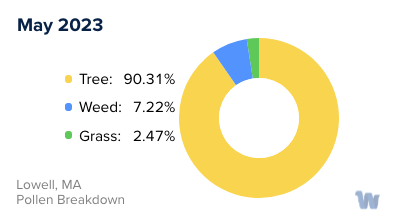
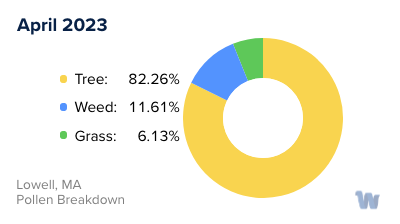
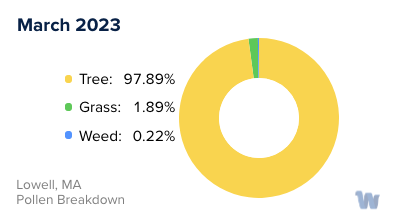
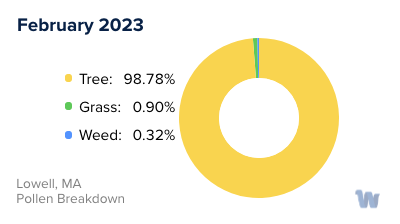
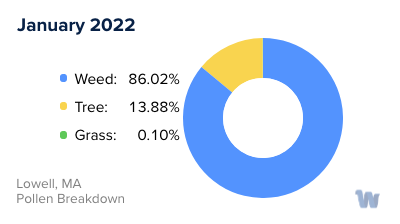
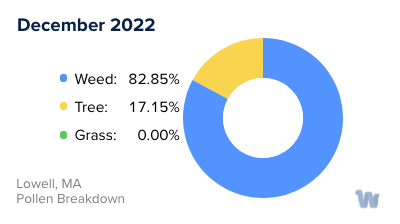
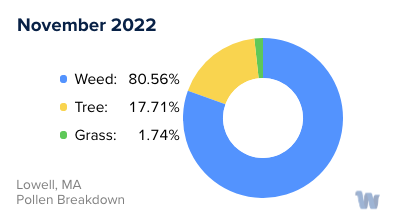
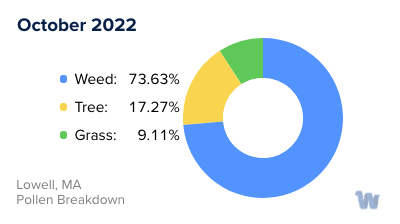
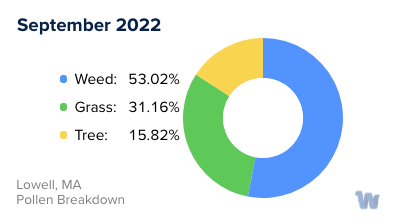
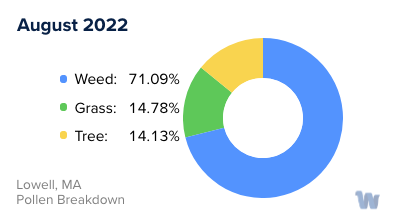
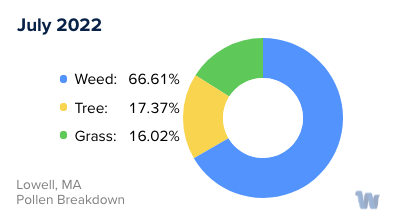
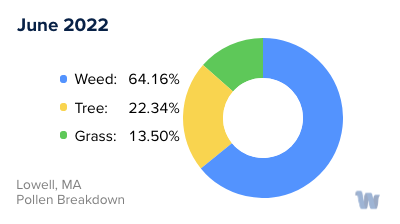
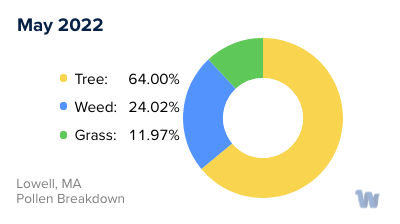
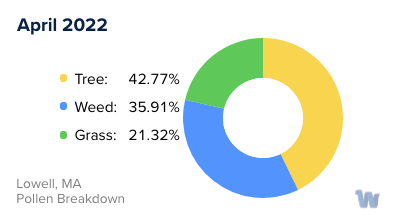
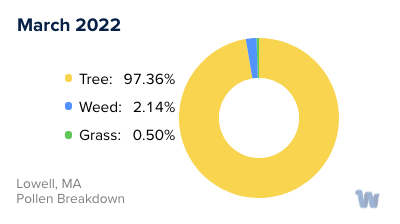
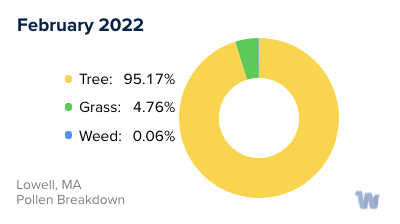
Pollen and Hay Fever in Lowell, MA
If you live in Lowell, Massachusetts, it's quite possible that you've experienced the sneezing, itching, and watery eyes associated with pollen allergies, commonly known as hay fever. This charming city, with its unique blend of urban life and natural spaces, does have its share of allergenic plants that could trigger these symptoms.
The pollen count in Lowell varies with the seasons, each of which brings its own distinctive blend of pollens. In spring, tree pollen is the main culprit. Oaks, maples, and pines, among other trees, begin to release their pollen, turning the air into an invisible minefield for allergy sufferers. The fine, powdery substance is carried on the wind, and it's virtually impossible to avoid, especially on dry, breezy days.
As the calendar turns to summer, grass pollen takes center stage. The lush lawns and fields of Lowell become breeding grounds for allergens. Common grasses in the area like Timothy grass, Kentucky bluegrass, and ryegrass release pollen that can cause hay fever. This is the time of year when people with allergies might find themselves needing to stay indoors more often, even though the weather outside is inviting.
By late summer and fall, weed pollen, especially from ragweed, becomes the primary allergen. Ragweed is a hardy plant that can grow almost anywhere, and it's particularly prevalent in the Lowell area. Its pollen is extremely lightweight and can travel vast distances on the wind, making it a widespread trigger for allergies.
Lowell's diverse range of trees, grasses, and weeds means that pollen is present in the air almost year-round. Yet, the precise mix of allergens changes with each season, giving each part of the year its unique allergy profile. For those with pollen allergies, understanding these patterns can be the first step towards navigating life in this beautiful city with greater comfort and ease.


